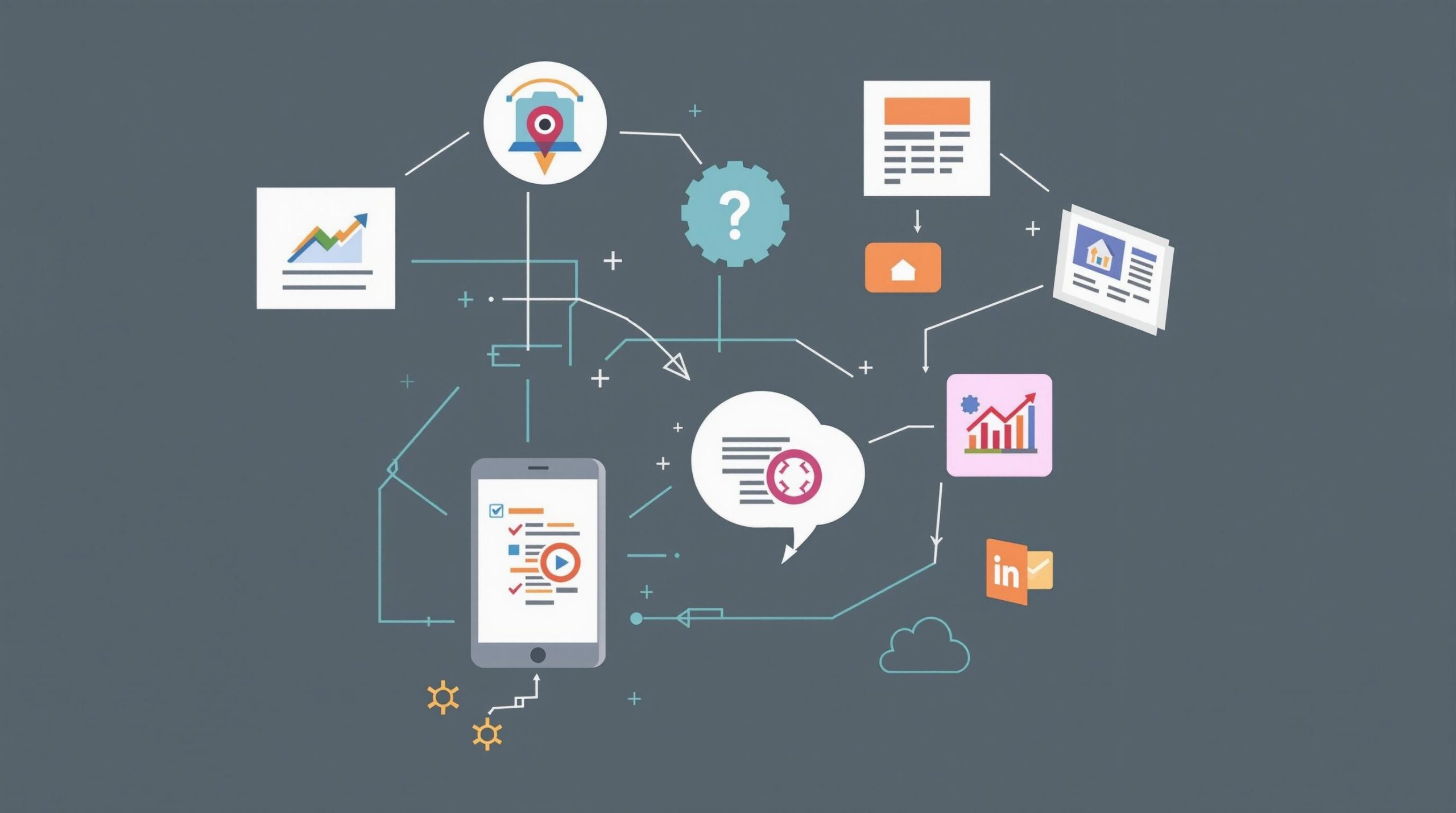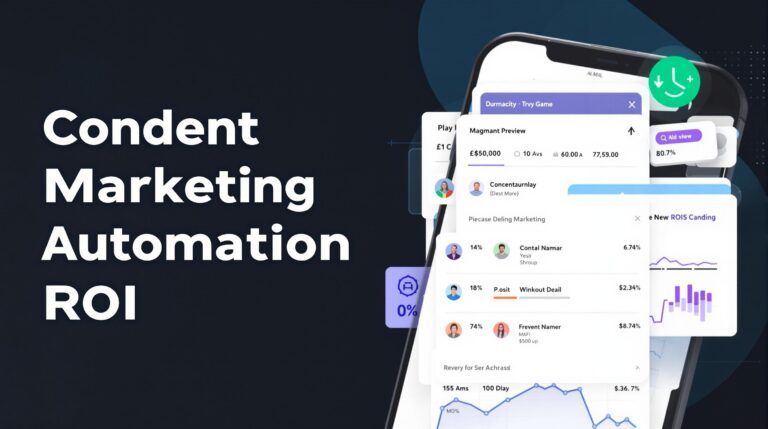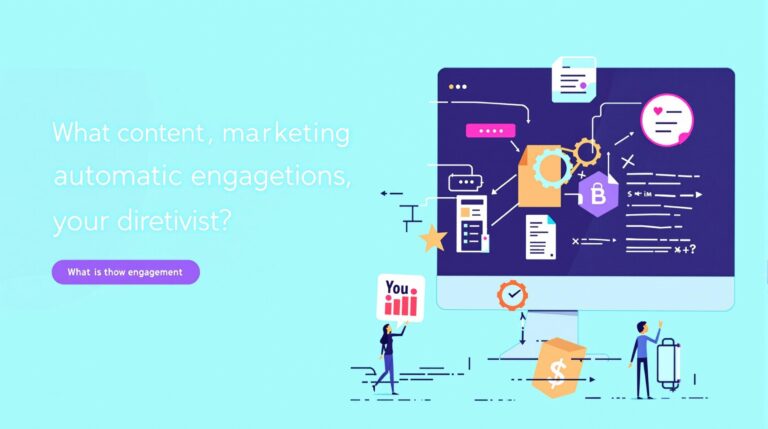How to Streamline Content Repurposing Using Automation Tools
Content repurposing automation is revolutionizing how marketing teams maximize their content investments across multiple platforms. By implementing strategic workflows and AI-powered tools, marketers can transform single content pieces into numerous formats without the traditional manual effort, leading to significant time savings and improved ROI.
Key Takeaways
- 79% of businesses now use marketing automation with 76% achieving positive ROI within one year
- Automated workflows save 6+ hours weekly on social media management alone
- AI transformation tools can save 3-4 hours per blog post when reformatting content
- A well-structured automation workflow includes trigger events, AI transformation, and multi-channel distribution
- Balancing automation with human oversight is essential for maintaining brand voice and content quality
Understanding the Content Repurposing Revolution
The content marketing landscape has shifted dramatically with automation taking center stage. According to WebFX, 79% of businesses now use some form of marketing automation, with 62% of marketers considering it critical to their campaign success. This isn’t just a passing trend—it’s a fundamental shift in how content teams operate.
The traditional approach to content marketing involved creating unique assets for each platform, resulting in excessive time investment and inconsistent messaging. Modern content automation strategies flip this model by starting with high-value cornerstone content that can be systematically transformed into multiple formats.
The results speak for themselves: 76% of companies achieve positive ROI within one year of implementing automation tools. Teams using automated workflows save over 6 hours weekly on social media management alone, freeing up valuable time for strategic thinking and creative development.

Building Your Automated Repurposing Workflow
Creating an effective content repurposing system requires three core components: trigger events, AI transformation, and distribution mechanisms. When properly integrated, these elements form a seamless workflow that minimizes manual intervention.
Trigger events serve as the starting point for automation sequences. According to Tinkering With Ideas, these typically include:
- Publication of new blog posts (45%)
- Video uploads (32%)
- Live webinar recordings (23%)
Once triggered, AI transformation tools like Jasper.ai and ChatGPT can reformat your long-form content into social media posts, email newsletters, and other formats. This transformation phase alone saves marketers an average of 3-4 hours per blog post, according to Jasper.ai research.
The final component is automated distribution. Approximately 70% of marketers now automate cross-platform publishing using tools like Zapier, Make (formerly Integromat), and IFTTT to connect their CMS platforms to social media schedulers.
To implement your own workflow, follow this basic structure:
- Configure your primary content platform to send publication alerts
- Use Typeface.ai or similar tools to convert primary content into multiple formats
- Set up project management templates in Trello or Asana that auto-generate repurposing tasks
- Connect your distribution channels through automation platforms
Essential Tools for AI-Powered Content Repurposing
The right content automation tools can dramatically accelerate your repurposing efforts. Here are the most powerful options for different aspects of the workflow:
For Content Transformation:
- HubSpot Content Remix (from $500/month): Transforms landing pages into blogs, emails, and ads with sophisticated AI
- Canva Magic Resize (free tier available): Automatically adapts visual content for 10+ platforms with a single click
- Revid.ai ($29+/month): Specializes in converting long-form videos into TikTok and Instagram Reels clips with automatic captions
For Workflow Management:
- Automata ($49/month): Generates 150+ content variants from a single asset using AI transformation
- HighLevel: Combines AI rewriting capabilities with CRM segmentation for targeted content repurposing
When selecting tools, I recommend starting with one focused solution that addresses your biggest content bottleneck. For most teams, this is either video-to-text conversion or blog-to-social transformation. Once that workflow is optimized, you can gradually add more specialized tools to your stack.
Measuring Success: Performance Metrics That Matter
Content repurposing automation isn’t just about saving time—it’s about improving marketing outcomes. According to WiserNotify, 80% of marketers report higher lead generation with automated repurposing, and automated email campaigns drive 21% of total email revenue.
To track the effectiveness of your content repurposing efforts, focus on these key metrics:
- Content production velocity (pieces per week)
- Cross-platform engagement rates
- Time saved per content piece
- Conversion rates by content format
- Overall ROI of content marketing efforts
Tools like Planable Analytics and Sprout Social can help compare engagement metrics across different formats and platforms. For example, one B2B company highlighted by Recast Studio increased LinkedIn engagement by 40% simply by using Automata-generated carousel posts derived from their existing blog content.
Setting up tracking dashboards that compare performance before and after implementing automation provides valuable insights into the real impact of your repurposing strategy.
Avoiding Common Automation Pitfalls
While content repurposing automation offers significant benefits, it also comes with potential challenges. According to Optimizely, 33% of marketers report losing their brand voice in AI-generated drafts, and 27% of repurposed posts contain stale data if not properly reviewed.
To avoid these pitfalls, implement these quality control measures:
- Use ClearVoice or Jasper Brand Voice to maintain consistent tone across all automated content
- Schedule quarterly content audits using Google Analytics to identify and retire low-performing assets
- Implement a human review stage for sensitive content or high-stake campaigns
- Create clear brand guidelines for AI tools to follow
The most successful automation strategies maintain a thoughtful balance between efficiency and quality. As ON24 notes, “Automation should enhance human creativity, not replace it.” This mindset ensures your content remains authentic while still benefiting from efficiency gains.
Advanced Strategies: From One-to-Many Content Scaling
Once you’ve mastered basic content repurposing automation, you can implement advanced scaling strategies to maximize your ROI. The most effective approach is the “content pyramid” method, where a single cornerstone piece spawns dozens of derivative assets.
For example, a webinar recording can be automatically transformed into:
- A full blog post with AI-generated transcript
- Multiple short-form video clips for social media
- An audio podcast episode
- An email newsletter series
- Infographics highlighting key statistics
Platform-specific formatting automation further enhances this approach. Tools like Typeface.ai can adapt content tone for different platforms while maintaining your core message. You can also implement automated hashtag generation and platform-specific formatting rules.
One impressive case study from HighLevel shows how a SaaS team used HubSpot Content Remix to transform a single whitepaper into 12 social posts, 3 blog updates, and an email series, boosting their conversion rate by 22%.
Implementation Guide for Businesses of All Sizes
The beauty of content repurposing automation is that it can be scaled to fit businesses of any size. Here’s how different organizations can approach implementation:
Enterprise Solutions:
- Implement HubSpot Content Remix with full CRM integration
- Develop custom API connections between proprietary systems
- Establish specialized teams for oversight of different content channels
Mid-Size Business Approach:
- Combine Zapier workflows with Canva Magic Resize and Revid.ai
- Create templatized workflows for common content types
- Implement weekly review processes for automated content
Small Business/Solopreneur Strategy:
- Start with free tools like Canva’s basic features
- Gradually add specialized tools as ROI proves their value
- Focus automation on your highest-performing content formats
A real-world example from Revid.ai shows how a solopreneur saved 15 hours per month by automating TikTok clip creation from YouTube videos. This approach allowed them to maintain a presence on both platforms without doubling their workload.
Future-Proofing Your Content Repurposing Strategy
The content automation landscape continues to evolve rapidly. To future-proof your repurposing strategy, stay informed about these emerging trends:
- AI-powered personalization that tailors repurposed content to specific audience segments
- Enhanced visual content transformation capabilities for short-form video
- Voice and audio optimization as podcast and audio platforms grow
- Advanced analytics that identify which content pieces have the highest repurposing potential
The most adaptable workflows will accommodate new platforms without requiring complete redesigns. I recommend building channel-agnostic templates that can be applied to emerging platforms as they gain relevance for your audience.
By implementing a thoughtful content repurposing automation strategy today, you’ll not only save time and resources but also position your marketing team to quickly adapt to tomorrow’s content landscape.
Sources
tinkeringwithideas.io – Content Repurposing Automation
jasper.ai –








